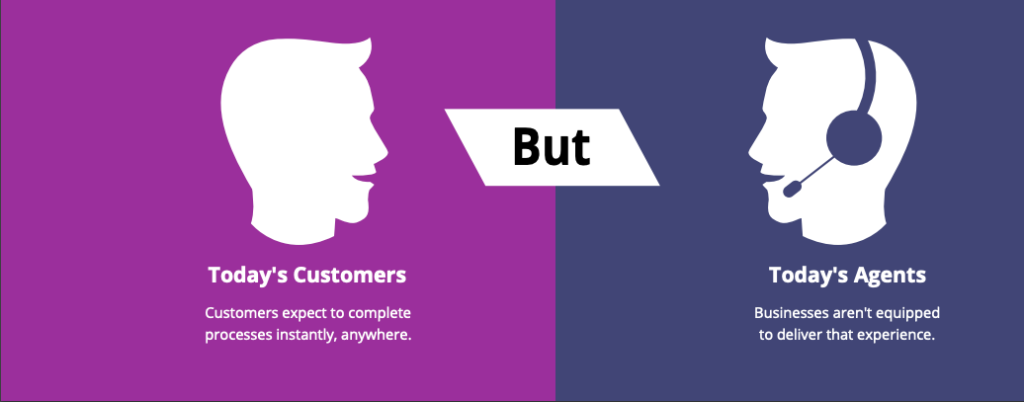Success Stories
Products
- Home
- Blogs
- A Journey into the New Age of Convenience and CX.
- Measure your brand's reputation.
- The Newage Customer Engagement Strategy
- The Role of Emojis In Customer Engagement.
- Why No-Code and Low-Code Software Is the Industry Disrupter You Should Pay Attention To
- Is Speed in Customer Service important to your business?
- Why a Messaging First Strategy makes sense for your brand?
- The importance of customer service in the digital age.
- The Future of Customer Service.
- Leveraging Digital Engagement to Modernize the Customer Experience.
A Journey into the New Age of Convenience and CX.
Hyperconnectivity and busy lifestyles are influencing the buying decisions of global consumers. Global consumers want convenience at every stage of shopping and brand engagement with products and services. ... Rapid urbanization and changes in households are also influencing the buying decisions of global consumers.
We live in a world where convenience is the new loyalty. It’s time to change how brands communicate with their customers. The 2020 digital consumer will simply change brands if you are unable to deliver seamless access to your services in what I believe will be the decade of true customer-centricity. Loyalty is not a given, like trust it needs to be earned.
 Whether you’re trying to out-service a competitor or disrupt an entire industry, creating less friction and being more convenient for your customers should be your strategy. When you raise the convenience bar, you create the next level of amazing customer experience. And, when you do, your customers will reward you with their money, their loyalty, and referrals.
Convenience is the differentiating (and disrupting) factor. Customer’s demand for convenience will disrupt and even wipe out unresponsive industries, create new ones, and transform those that adapt quickly.
AI Bots/Virtual agents must work seamlessly with Human agents to bring in the convenience factor.
Whether you’re trying to out-service a competitor or disrupt an entire industry, creating less friction and being more convenient for your customers should be your strategy. When you raise the convenience bar, you create the next level of amazing customer experience. And, when you do, your customers will reward you with their money, their loyalty, and referrals.
Convenience is the differentiating (and disrupting) factor. Customer’s demand for convenience will disrupt and even wipe out unresponsive industries, create new ones, and transform those that adapt quickly.
AI Bots/Virtual agents must work seamlessly with Human agents to bring in the convenience factor.
The hyperconnected world
People all over the world are inspired by the convenience global platforms like Uber, Booking.com, and Zappos deliver to their customers. Consumers, from young to old, have truly changed to being mobile citizens. They are hyper-connected and above all increasingly impatient. Customer expectations have changed. Today’s consumers expect 24/7 availability of communication channels at any given moment in the customer journey. They prefer to communicate with companies at their own pace.The Convenience Revolution.
 Whether you’re trying to out-service a competitor or disrupt an entire industry, creating less friction and being more convenient for your customers should be your strategy. When you raise the convenience bar, you create the next level of amazing customer experience. And, when you do, your customers will reward you with their money, their loyalty, and referrals.
Convenience is the differentiating (and disrupting) factor. Customer’s demand for convenience will disrupt and even wipe out unresponsive industries, create new ones, and transform those that adapt quickly.
AI Bots/Virtual agents must work seamlessly with Human agents to bring in the convenience factor.
Whether you’re trying to out-service a competitor or disrupt an entire industry, creating less friction and being more convenient for your customers should be your strategy. When you raise the convenience bar, you create the next level of amazing customer experience. And, when you do, your customers will reward you with their money, their loyalty, and referrals.
Convenience is the differentiating (and disrupting) factor. Customer’s demand for convenience will disrupt and even wipe out unresponsive industries, create new ones, and transform those that adapt quickly.
AI Bots/Virtual agents must work seamlessly with Human agents to bring in the convenience factor.
Key takeaways to improve your CX strategy.
Engrain CX in the company culture – Customer experience has to be in the DNA of the company, It’s not just a department but a philosophy to be embraced by everyone from the CEO to the most recently-hired or lowest-level position in the company. Map the Customer Journey – Indulge yourself and your team in mapping every interaction a customer has with the company, from the start of doing business to the point of purchase and beyond.- Touchpoints represent the various interactions a customer has across the spectrum, regardless of channel — digital, email, phone, or in-person.
- Impact points are factors that affect the touchpoint in one way or another and where companies should find ways to improve the interaction.
- Friction points are the “anti-convenience” interactions, such as keeping a customer on hold for an extended period.
- Breakpoints are those critical junctures where a customer is about to leave and the company has to take steps to retain him or her.
“Providing excellent CX is the new marketing”
